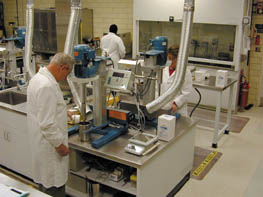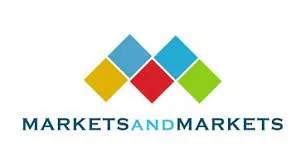Managing Change: Improve Without Disrupting Your Customers


DuPont White Pigment & Mineral Products, the world's largest producer of titanium dioxide (TiO2), has developed a protocol for managing and communicating change. This protocol is modeled after QS-9000 Bulk Material Approval Process (BMAP) guidelines developed to define generic requirements for bulk material approval by the U.S. Big Three automakers: Ford, GM and Chrysler.
This change-management protocol:
- Allows process improvement while maintaining finished-product consistency to meet customer needs,
- Minimizes commitment of resources to approve or qualify changes by classifying the magnitude of the change and recommending the appropriate customer action, and
- Streamlines process development by defining the path forward so that no energy is wasted determining how to implement changes.
2. Define appropriate testing required.
3. Evaluate impact of change.
4. Classify change as minor, moderate, or major.
5. Specify appropriate customer communications and actions.A process map integrating these five basic steps with the required decision points is shown in Figure 1. This process map guides you from proposing a change, through determining the impact of the change, to making the appropriate communication to your customers.

Assess Potential Market Impact
Whenever a process change is proposed, the originator must complete a Market Impact Assessment (MIA) to determine whether the proposed change has the potential to change product quality or performance. The MIA is a simple yes/no checklist that serves as the first screen in the management of change protocol. In the abbreviated MIA shown in Table 1, a "yes" answer to any of these questions initiates a review to define the appropriate product testing required when the proposed change is tested. If all answers are "no," the proposed change is determined to have zero potential for market impact and no special testing or further review is necessary.Define Appropriate Testing
If the MIA indicates that there is potential for the change to affect the customer, an appropriate product test protocol must be defined. At DuPont White Pigment & Mineral Products, this responsibility falls to "grade stewards." These technical professionals are familiar with manufacturing technology, and are experts in the properties and industry applications of the particular TiO2 grade. After consulting with the originator of the process change to gain an understanding of how the product may change, the grade steward will determine the most likely impact of the proposed change and define which tests are needed.In every case, standard product release properties are tested for changes. In addition, the grade steward recommends appropriate tests from a Product Evaluation Matrix (PEM) that covers the gamut of nonroutine analytical tests and end-use performance tests. In the case of TiO2, an example of a nonroutine analytical test is surface area by BET N2 adsorption, and an example of an end-use performance test is tint strength of a high-gloss architectural latex paint. Selection of the appropriate PEM tests is determined by the nature of the change and the most likely impact it will have on product performance. If there is little or no experience with the consequences of a proposed change, broader PEM testing is required to ensure that there are no unforeseen changes in product performance.

Define Required Sample Size
Another key element in defining appropriate testing is to specify the number of samples to be tested. We want to minimize the risk of making inaccurate decisions. Statistically, there are two risks to be considered:Alpha risk-the risk of falsely determining that there is a product change when in fact there is none.
Beta risk-the risk of falsely determining that there is no product change of a given magnitude when in fact there is one.
Alpha risk is primarily borne by the supplier who proposes the process change in that they may deploy resources to address a product quality change that does not exist or abandon the proposed change altogether. Beta risk is primarily borne by the customer who unknowingly receives a product that differs in performance and could affect their process.
In addition to alpha and beta risks, the magnitude of the difference (the delta) detected in the measured product property must be defined. Typically, this is defined as the ratio of detectable delta to the standard deviation of the particular product property. In other words, do you want to detect a change of 1, 2, or 3 standard deviations from the baseline average?
The relationship between alpha risk, beta risk, detectable delta and the number sample (n) required is shown in the statistical power curves in Figure 2. In these curves, the beta risk is represented on the y-axis as power (1-beta). These curves clearly show that as you seek to minimize risk (i.e., lower alpha or higher power) or seek to detect smaller differences, the number of samples required increases dramatically. Because the number of samples to be tested directly affects the amount of resources committed to define the impact of the change, serious consideration must be given to this issue.
In general, sample sizes of 10 control (or baseline condition) samples and 10 test condition samples do a very good job (95% power at 5% alpha risk) of detecting a change of two standard deviations. If higher risk is tolerable (e.g., 10% alpha risk and 10% beta risk), then five control samples and five test condition samples are adequate to detect a change of two standard deviations. We've determined that testing at least six control and six test condition samples provides about the right balance of resources, risk, and resolution. Testing only one or two samples is nearly meaningless and generally not worth the effort.
Evaluate Impact of Change
After the required testing is defined, it's time to run a trial of the proposed change, collect the samples, and begin the analyses. While this step is relatively easy to describe, it is by far the most resource-intensive step in the process. Diligent coordination is required to ensure that all the parts of the organization-manufacturing, quality control, R&D, and technical marketing service-are working in concert to generate the needed data.Once all the data is available, a statistical t-test should be performed to determine whether there is a statistically significant difference in calculated sample means of measured properties of trial samples vs. baseline or control samples. The details of the t-test are described in a recent PCI article, "DeSigns of the Times, Or t-ing Off," February 2001. When performing the t-test, the statistical confidence level must be defined. The higher the confidence level, the more difficult it is to disprove the "null hypothesis" that no difference exists between the two sample sets. Typically, a 95% confidence level is used unless the consequences of falsely determining that there is a difference are overwhelming.
If the t-test shows that there is a statistically significant difference of a measured property mean between the trial samples and the control samples, then it must be determined if this difference is commercially meaningful. In some cases, a statistical difference in a product property is commercially insignificant or within commercially acceptable limits. With TiO2, for example, it may be fairly easy to detect a change in the pigment CIE a* color value as low as 0.06 units because the standard deviation of this property for a particular TiO2 grade may be as low as 0.03 units. But a shift of 0.06 units is insignificant to a coating producer because color shifts as high as 0.5 units are often difficult to detect visually. We rely on the expertise and experience of the grade stewards and other technical marketing professionals to define commercially acceptable limits. The commercially acceptable limits for each finished product property and end-use performance tests are documented in the PEM.

Classify Change as Minor, Moderate, or Major
Two primary criteria are used to classify the proposed change as minor, moderate, or major.- 1. The type and nature of the proposed change (logic), and
2. The statistically defined impact of the proposed change on finished product properties and performance.
When classifying the change, the most severe criteria take precedence in the final classification. For example, an equipment size change (minor) that results in a finished product property change outside the tolerance limits (moderate) is classified as a moderate change. A change in manufacturing site (moderate) that results in no change in finished product properties or performance tests (minor) is also classified as a moderate change.
Specify Appropriate Customer Communications and Actions
Classifying the change is important because it defines the appropriate customer communications and actions as described below. The advantage of a predetermined communication and customer action plan based on this change classification protocol is that only relevant changes are communicated. However, when a communication is warranted, it is framed in the proper context. In other words, the supplier does not have to overwhelm the customer by communicating minute, irrelevant changes; yet when a change is communicated, the significance is understood and appreciated.- Minor Change -- Minor changes are documented and approved internally, but no customer notification is required.
- Moderate Change -- Customers are notified of all moderate changes, but a formal product qualification and approval by the customer is not recommended. The data obtained from the PEM provides statistical evidence clearly describing the magnitude of the change. This statistical evidence combined with the logic applied in the Management of Change protocol is usually sufficient to achieve customer acceptance of the change.
- Major Change -- For major changes, customers are notified and asked to formally qualify the new product. The qualification process would usually consist of customer lab evaluations, followed by production trials. This involves a substantial commitment of resources and should be undertaken only when there is significant benefit to all concerned.
Summary
DuPont White Pigment and Mineral Products has used this Management of Change protocol successfully over the last several years to improve manufacturing capability, while ensuring that our customers continue to receive the product consistency and performance that they need and expect. When we have communicated moderate or major changes, customers have generally appreciated the depth and rigor of our analyses, and the changes have been implemented easily. This five-step process for managing change is relatively simple and straightforward, but what makes it work is the knowledge of customer needs and the rigor of applying proven statistical techniques.For more information on managing change, contact Robert A. Kwoka, DuPont White Pigment & Mineral Products, Chestnut Run Plaza, Building 709, Wilmington, DE 19880-0709; e-mail Robert.A.Kwoka@usa.dupont.com; phone 302/999.3204; fax 302/999.2479; or Circle Number 95.
Looking for a reprint of this article?
From high-res PDFs to custom plaques, order your copy today!





